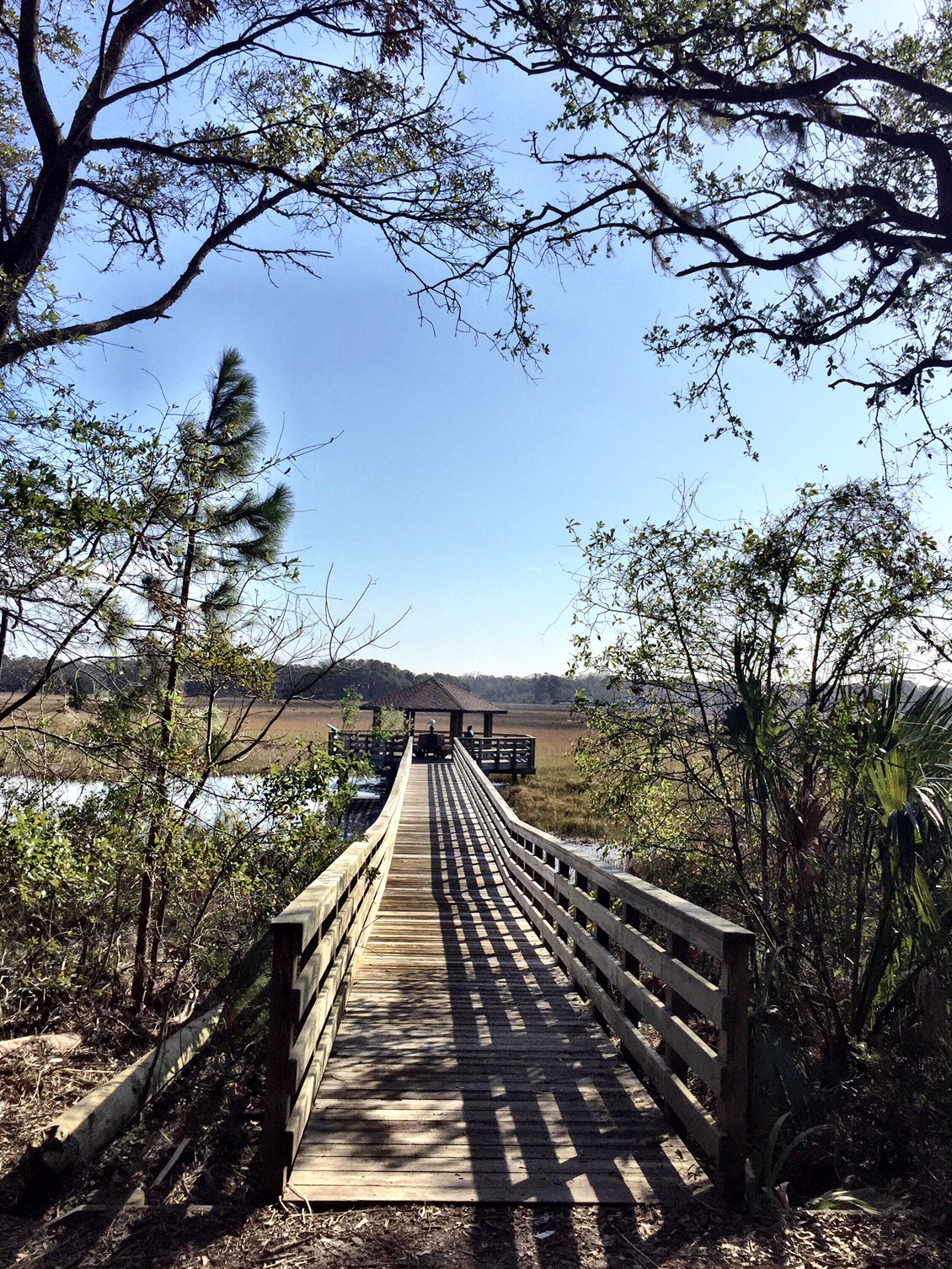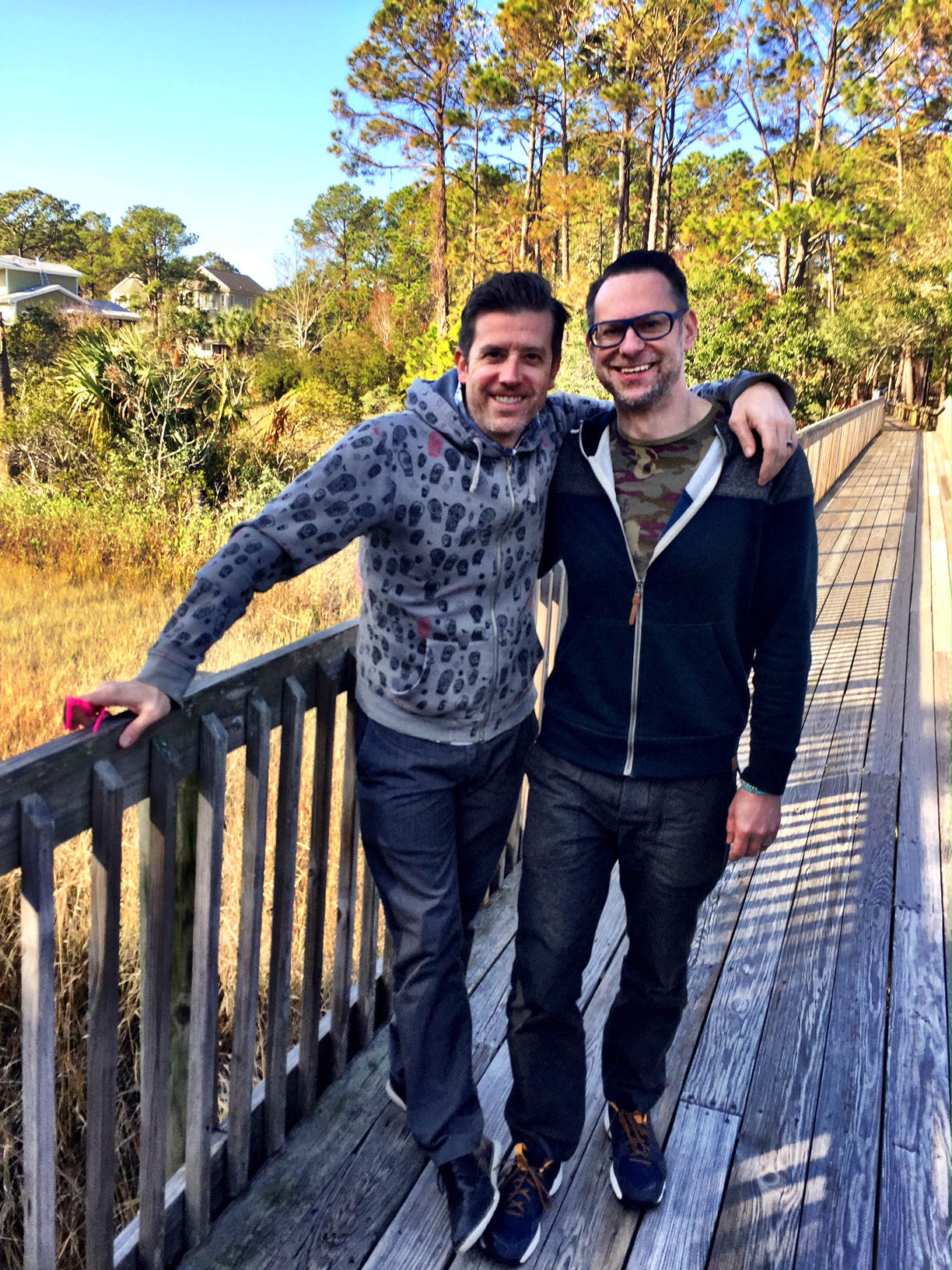A Civil War battle in Port Royal, South Carolina, the first ex-slaves to be paid wages and a Reconstruction village all play a part in this African-American community’s heritage.
The Gullahs of Hilton Head Island were descended from African slaves and are a key part of the history of the Civil War and Restoration
We liked him right from the get-go. He had a great sense of humor and has been a part of the Gullah community his whole life.
“My name’s Irvin Campbell — but you can call me Irv,” he said.
“The blacks on Hilton Head Island were the very first former slaves to earn wages and actually get paid for their labor.”
My mom had suggested we take the Gullah Heritage Tour, a two-hour bus ride around Hilton Head Island, South Carolina that highlights a vibrant African-American community.
“The Gullah people are the descendants of the slaves who worked on the rice plantations in South Carolina and Georgia,” said historian Joseph Opala. “They still live in rural communities in the coastal region and on the Sea Islands of those two states, and they still retain many elements of African language and culture.”
The Gullah Heritage Corridor stretches from St. Augustine, Florida up to Wilmington, North Carolina, and Hilton Head Island played a key role in the community.
Not so long ago, Gullahs owned much of the land on the 26,880-acre isle. Today, they own less than 1,000, Irv informed us.
The name Gullah comes from a corruption of their original African tribe.
These descendents of West African slaves take their name from the Gola or Gula tribe from Liberia and Sierra Leone. They settled on the 100 Sea Islands in the Hilton Head area. After the Civil War, more than 1,200 freed slaves remained.
Gullahs are also called Geechees.
The word is synonymous with Gullah. It means “living by the water,” according to Irv.
Gullah tends to be used more often to describe those living in South Carolina, and Geechee for those in Georgia.
Union troops quickly took over Hilton Head Island from the Confederacy during the Battle of Port Royal
The heart of the Battle of Port Royal only took about five hours.
During the American Civil War, Union troops wanted to stop trade in the Confederacy, which led to an attack at Port Royal Sound, off of Hilton Head Island.
It didn’t take Union troops long to gain control of the island, according to Irv. “They didn’t have any opposition,” he said.
The Port Royal Experiment involved paying freed slaves for the first time — right near the start of the Civil War.
When the Union Army occupied South Carolina’s Sea Islands, including Hilton Head, on November 7, 1861, it freed about 10,000 slaves. Keep in mind that this was all near the beginning of the Civil War.
The Confederate Army and the white plantation owners hightailed it out of there, and the Union Army found itself in possession of a region famous for growing cotton.
It decided upon the novel idea of an “experiment”: Try paying wages to these contrabands (the awful word used to describe slaves freed by Union forces as well as for those who had escaped). The blacks on Hilton Head Island were the very first former slaves to earn wages and actually get paid for their labor.
Missionaries, teachers, doctors and ministers came from New York and Pennsylvania to educate and help shape the African-American community.
The Gullah community used to look after its own.
In the Gullah communities that developed on Hilton Head, everything was shared, and everyone knew each other.
“We’d catch enough fish to feed those families who didn’t have a boat. We took care of each other,” Irv told us.
That's not the case any longer, he added.
Hilton Head Island really changed when the bridge to the mainland was built. (And changed again with the Cross Island Parkway.)
After the Civil War ended, Union soldiers auctioned off the island, according to Irv. Northern businessmen, called carpetbaggers for the soft-sided bags they traveled with, bought the entire island and sold it off. Many Gullah families purchased acreages, and for nearly a century, they farmed their land.
But once the bridge that connected the island to mainland was built in 1956, there was an influx of people to the island.
“That’s when families started locking their doors” (which comes out sounding like doe), Irv told us.
There used to be just one paved thoroughfare on the entire island. “We called it the Tar Road,” Irv said.
Later, in 1989, the Cross Island Parkway was constructed, making Hilton Head even more accessible to the vacationers (many from Ohio, as it’s about the max you’d be able to drive in a day) that now flock here every summer.
A Mitchelville family poses with a Union soldier
The Reconstruction after the Civil War began on Hilton Head Island at Mitchelville.
In what is now called Fish Haul Creek Park on the “heel” of the island, the community of Mitchelville was created. The government provided freedmen a quarter of an acre of land and the materials to build a 22-by-18-foot house. I couldn’t get over how small that really is. I had a hard time imagining even one person having room to lie down to sleep in a space of that size — especially if there was a stove or table or any other piece of furniture, never mind if an extended family lived together.
The government gave former slaves the material to build small houses and a plot of land to farm on in Mitchelville on Hilton Head Island. It was the first freedman’s community after the American Civil War
Mitchelville lasted from 1862 to 1877, when it finally dissolved.
“Many people realized they could move anywhere else,” Irv said.
Irv’s involved in a project to restore Mitchelville.
Harriet Tubman, famous for her involvement with the Underground Railroad, had to see what the Mitchelville hype was all about
Mitchelville’s most famous visitor was none other than Harriet Tubman.
“These industrious new citizens built homes on neatly arranged streets, elected their own officials, developed laws, built an economy and implemented mandatory education for their children,” Historic Mitchelville Freedom Park reports. “In fact, the reports of the success of Mitchelville were so glowing, that the famous Underground Railroad freedom fighter, Harriet Tubman, was sent to Hilton Head to see this bustling town, so she could share the story of Mitchelville’s self-governed success with future freedmen towns.”
The most successful local Gullah family would sail off to trade goods.
One plantation was named Spanish Wells for the freshwater wells dug by the first European invaders.
In the 1920s to the ’50s, Gullahs would trade fruit, veggies and wild game on the Simmons family’s property in Spanish Wells. Whatever was left was given to Simmons, who would sail off to Savannah, Georgia once a week to sell the goods. It was a 45-hour journey — and sometimes the winds weren’t favorable, so they couldn’t make it Savannah, and the perishable goods would be lost.
Indigo Run Plantation was where the healers lived.
The neighborhood once known as Gardner was home to the Aiken family, the “medicine makers,” according to Irv.
There weren’t proper doctors on Hilton Head, and this father and son handled medical cases — at least the ones the midwives didn’t attend to.
“But Mr. William Aiken took his recipes with him when he died,” Irv said.
One of the main crops was rice, which led to fatal diseases — among the white folk, at least.
Rice cultivation needed freshwater ponds, but these bred hordes of mosquitoes, which in turn carried malaria and yellow fever.
Thing is, only the whites were affected; because South Carolina has a similar semitropical environment to Africa, and the Gullahs had sickle cell immunity, slaves didn’t get sick, Irv told us.
Many early structures were constructed of an unusual material.
Irv drove us past the ruins of part of a plantation owner’s home — that of William Pope, known as “Squire” because he had so many properties.
The structure looks like an art project, as if there are shells stuck all over it. And indeed, there are: Buildings of this era were made of tabby, which consists of lime, sand and oyster shells.
Squire Pope is the largest Gullah neighborhood on the island. Its original inhabitants were known for fishing and shrimping.
Gullah cemeteries are placed by the water.
We passed a small cemetery, which Irv points out is atypical, as it’s situated inland.
"You see, Gullahs bury their dead along the edge of a waterway because they believe that's the only way we can get back to their homeland,” Irv told us. “It’s so spirits can take the waters back to West Africa.”
Most homes and schoolhouses were built on stilts.
You’ll see stacks of bricks propping up the buildings. This was because people kept chopped wood underneath so they’d always have some dry wood to cook with and keep them warm.
Beach pavilions were once quite a scene.
In the Chaplin neighborhood, Irv told us about beach pavilions. Back in the day, the pavilions would have changing rooms, showers and a dance floor, all under one roof.
We stopped at Driessen Beach Park and headed down the boardwalk to take photos by the water.
“They used to bring in Motown singers, from 1957 to ’70,” Irv reminisced. “We’d drive right on the beach. In 1965, Ike and Tina Turner were here. I remember that one well. I was 18 years old.”
Hilton Head natives like their privacy.
When I first came to the island as a kid, I learned that McDonald’s had to build a brick restaurant to fit in with the Hilton Head aesthetic, and that they weren’t allowed to put up their trademark golden arches. I thought that was the coolest thing — a town telling a huge company like Mickey D’s to follow their rules or shove it.
Strict rules remain when it comes to construction projects.
“People come to the island and complain they can’t find anything!” Irv said. “On Hilton Head, we believe in setbacks and buffers. It's the law on Hilton Head that nothing can be built to the curb. And there are strict tree laws. Gotta be setbacks and buffers.”
The Stoney plantation was once the main drag.
“This used to be our downtown,” Irv said.
There were four Gullah general stores that sold gas, along with a vast assortment of other goods.
“You could get anything at these stores, from penny candy to a piece of equipment for your horse harness,” he told us.
Then Irv regaled us with a tale from his childhood.
“You could buy all-day jawbreakers there. You’re too young to remember Sugar Daddy [caramel pops]. You could suck that for two days! We’d save the wrapper, suck on it all day, then put it on our windowsill. Next day, what would it be covered with? Ants! We’d take that candy to the water pump, wash off those ants and start sucking on it again!”
Tip: We found a $2 off coupon in one of the free publications, Island Events. Tickets cost $32 for adults; $15 for kids 12 and under.
If you’re spending some time on Hilton Head, there’s much more to do than play golf and go to the beach. Consider hopping on the bus for an insightful tour of the island’s fascinating Gullah heritage. –Wally

























